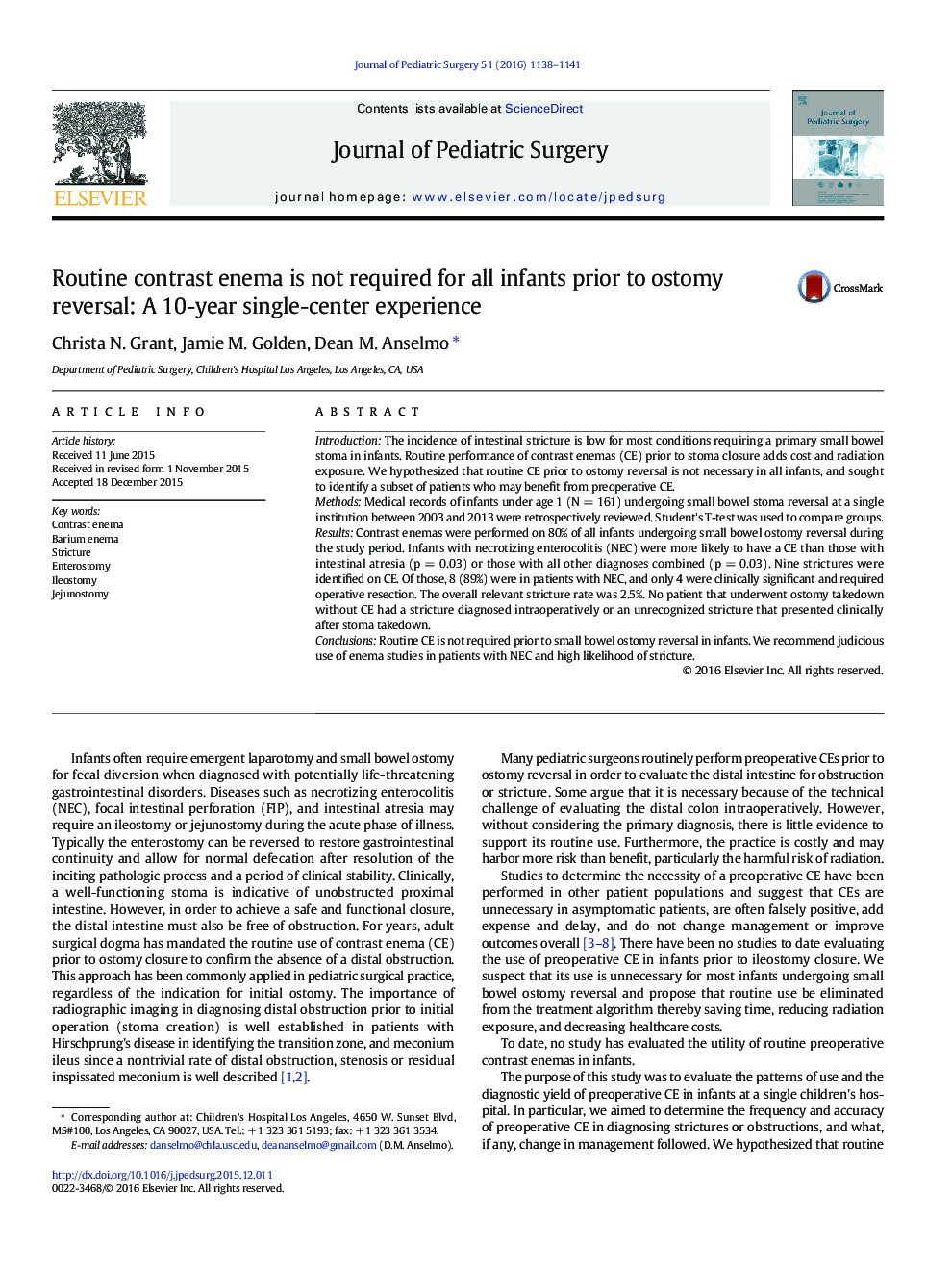| Article ID | Journal | Published Year | Pages | File Type |
|---|---|---|---|---|
| 4154792 | Journal of Pediatric Surgery | 2016 | 4 Pages |
IntroductionThe incidence of intestinal stricture is low for most conditions requiring a primary small bowel stoma in infants. Routine performance of contrast enemas (CE) prior to stoma closure adds cost and radiation exposure. We hypothesized that routine CE prior to ostomy reversal is not necessary in all infants, and sought to identify a subset of patients who may benefit from preoperative CE.MethodsMedical records of infants under age 1 (N = 161) undergoing small bowel stoma reversal at a single institution between 2003 and 2013 were retrospectively reviewed. Student's T-test was used to compare groups.ResultsContrast enemas were performed on 80% of all infants undergoing small bowel ostomy reversal during the study period. Infants with necrotizing enterocolitis (NEC) were more likely to have a CE than those with intestinal atresia (p = 0.03) or those with all other diagnoses combined (p = 0.03). Nine strictures were identified on CE. Of those, 8 (89%) were in patients with NEC, and only 4 were clinically significant and required operative resection. The overall relevant stricture rate was 2.5%. No patient that underwent ostomy takedown without CE had a stricture diagnosed intraoperatively or an unrecognized stricture that presented clinically after stoma takedown.ConclusionsRoutine CE is not required prior to small bowel ostomy reversal in infants. We recommend judicious use of enema studies in patients with NEC and high likelihood of stricture.
